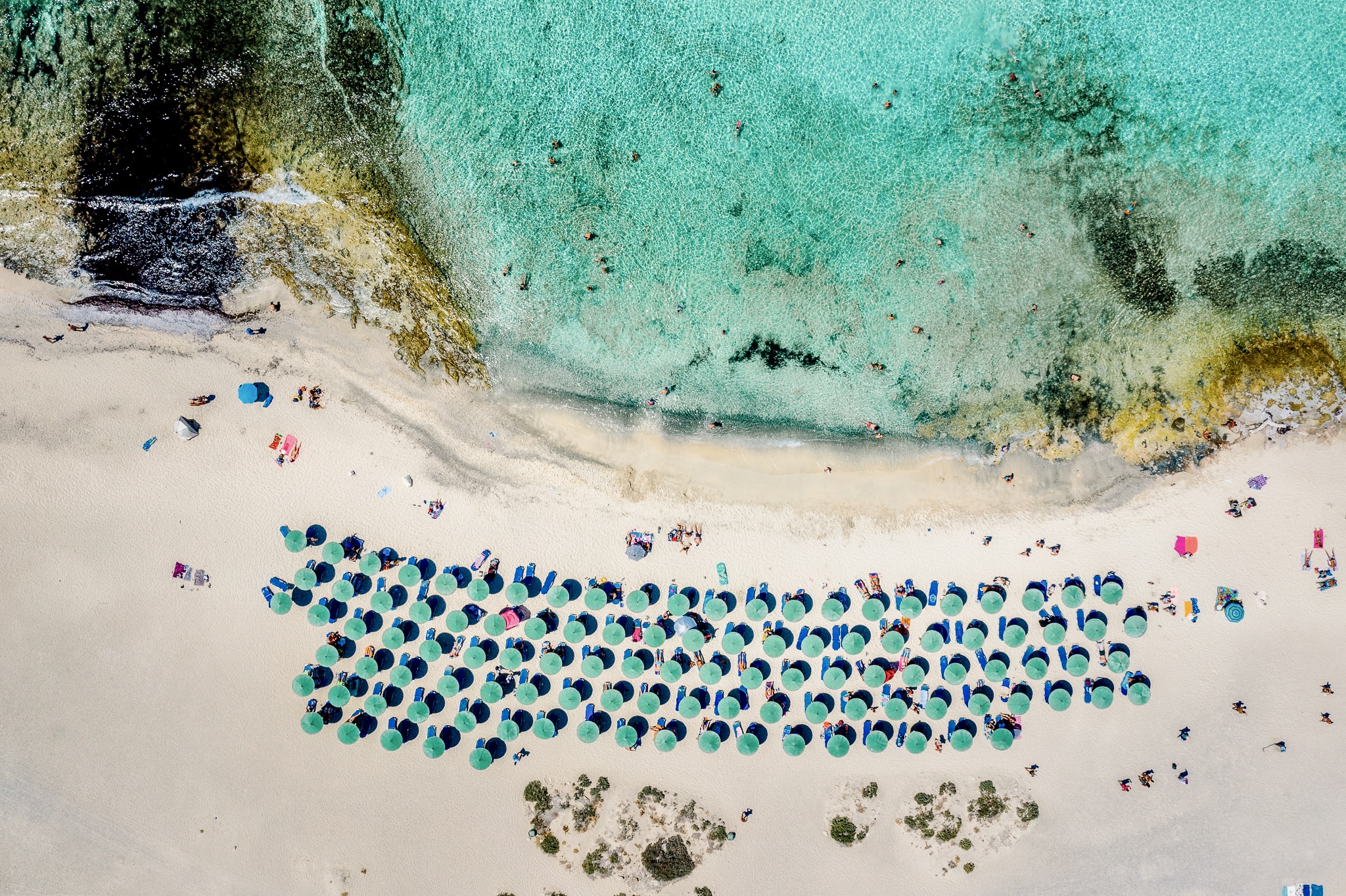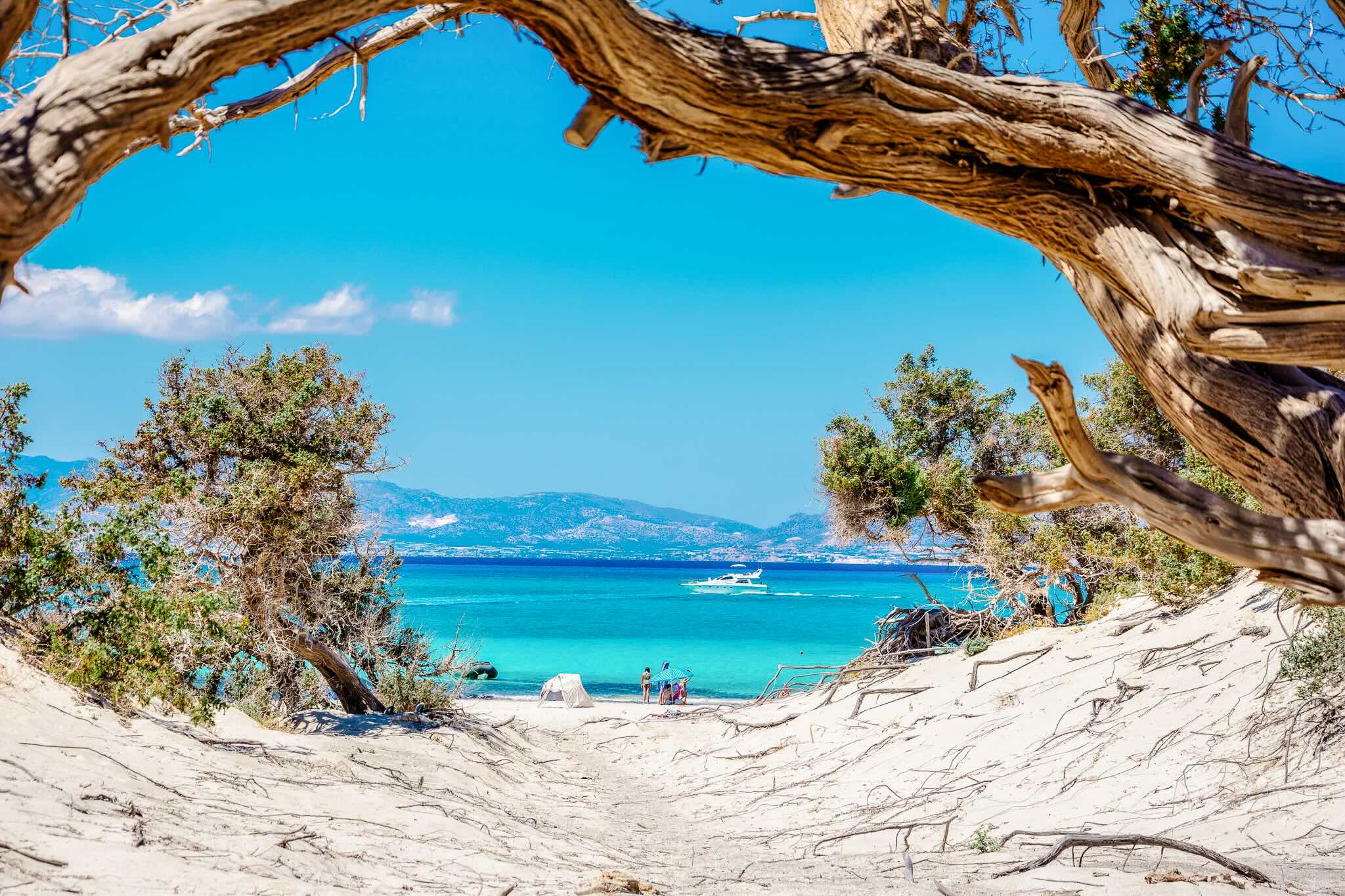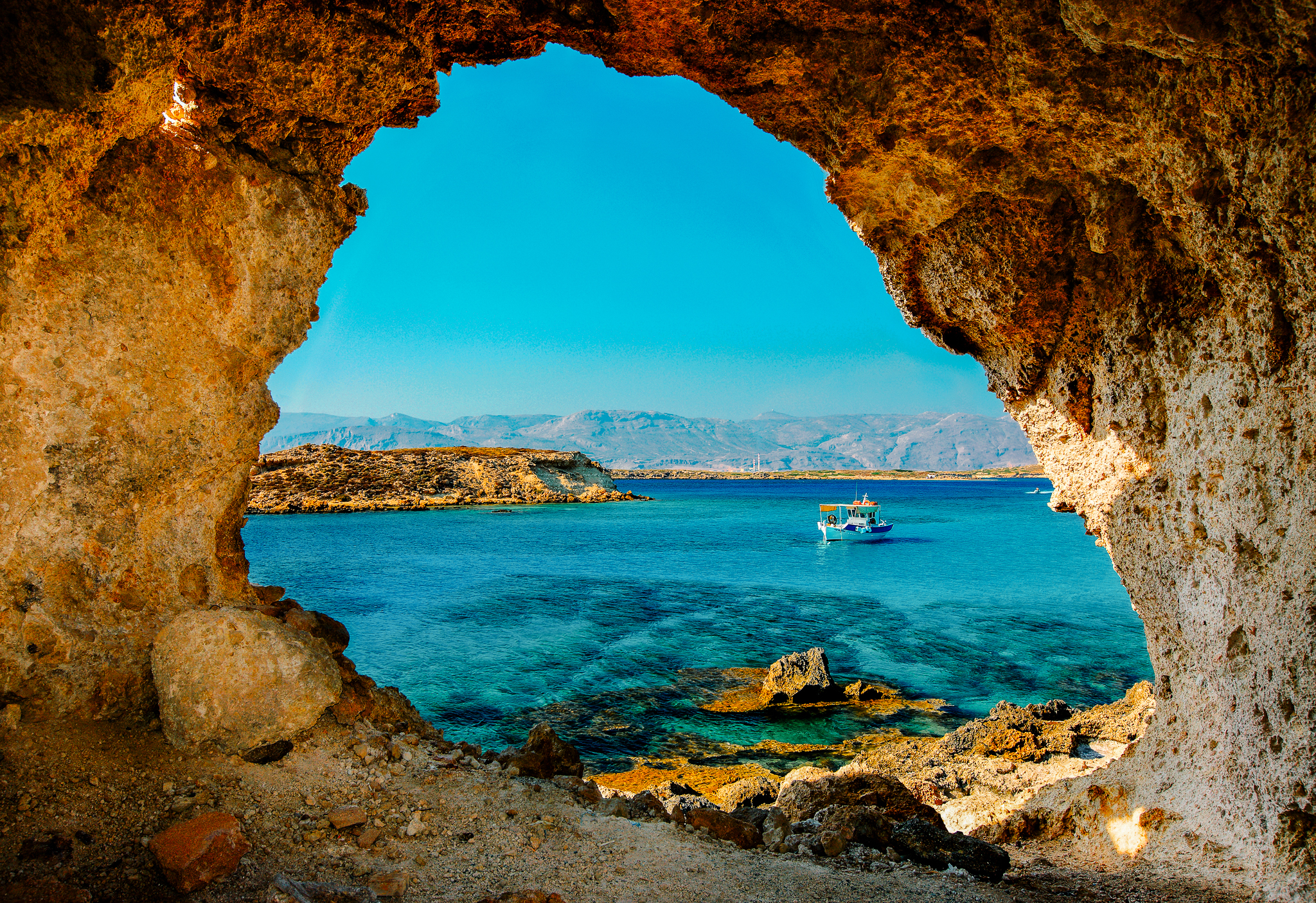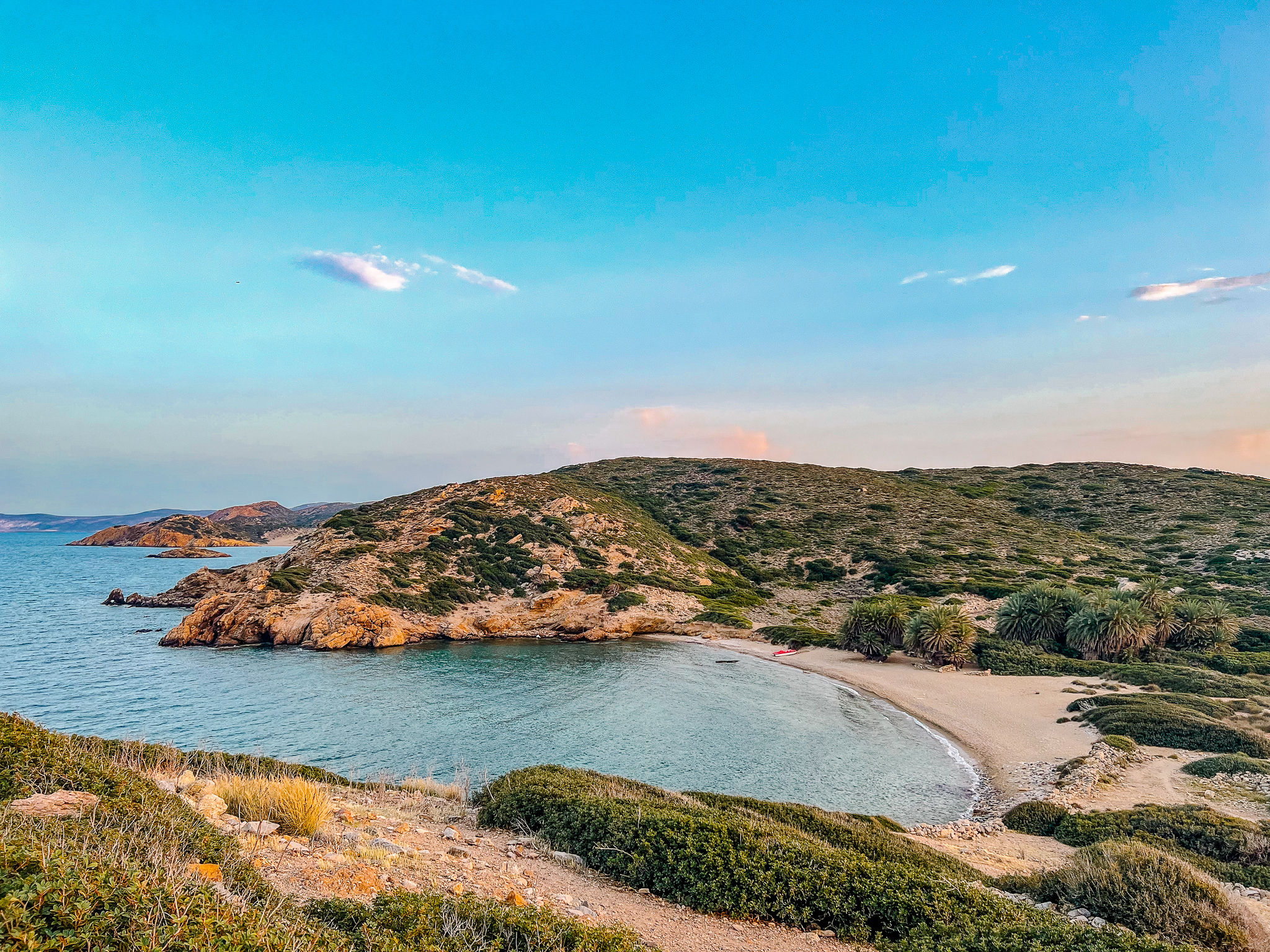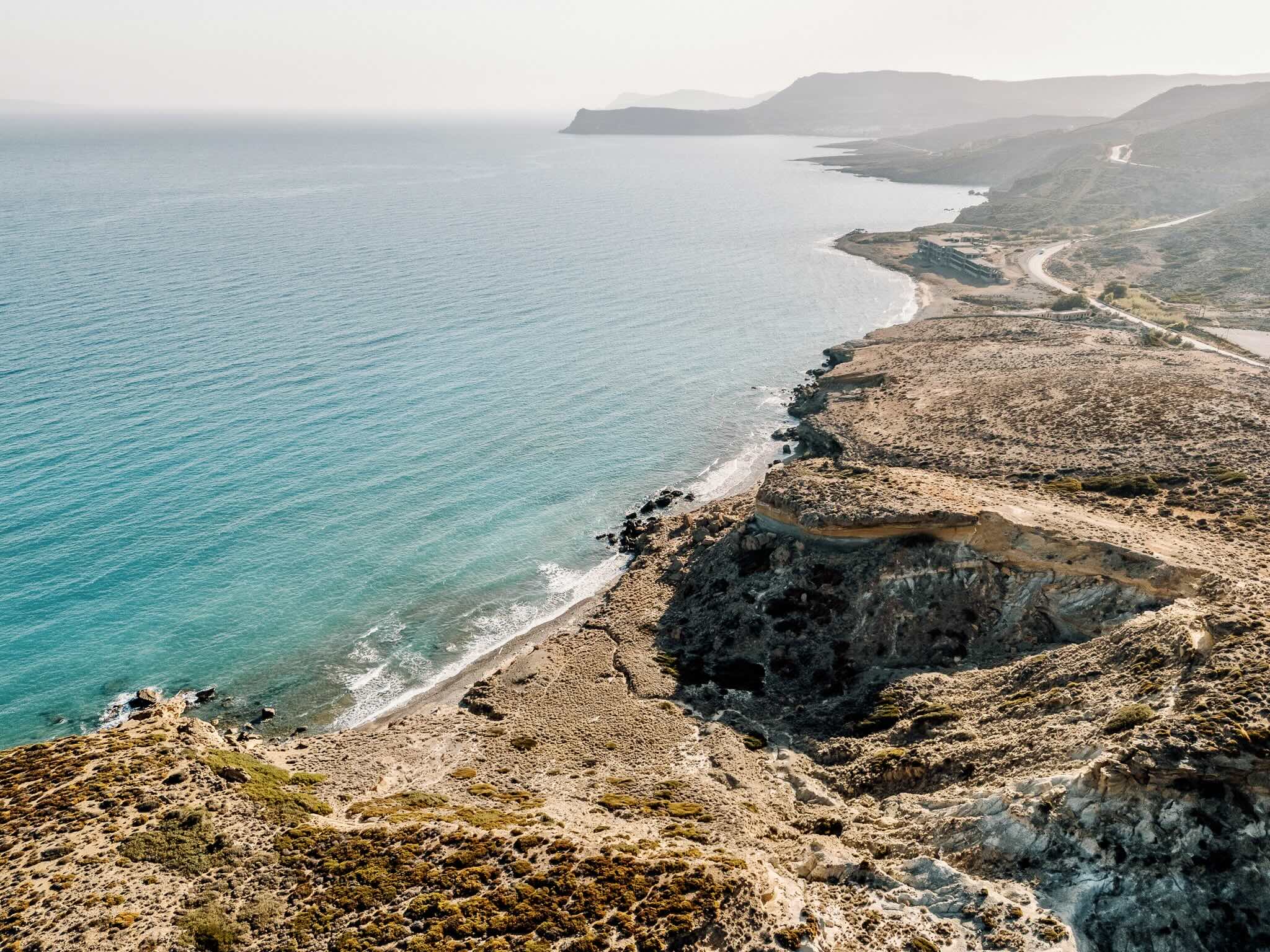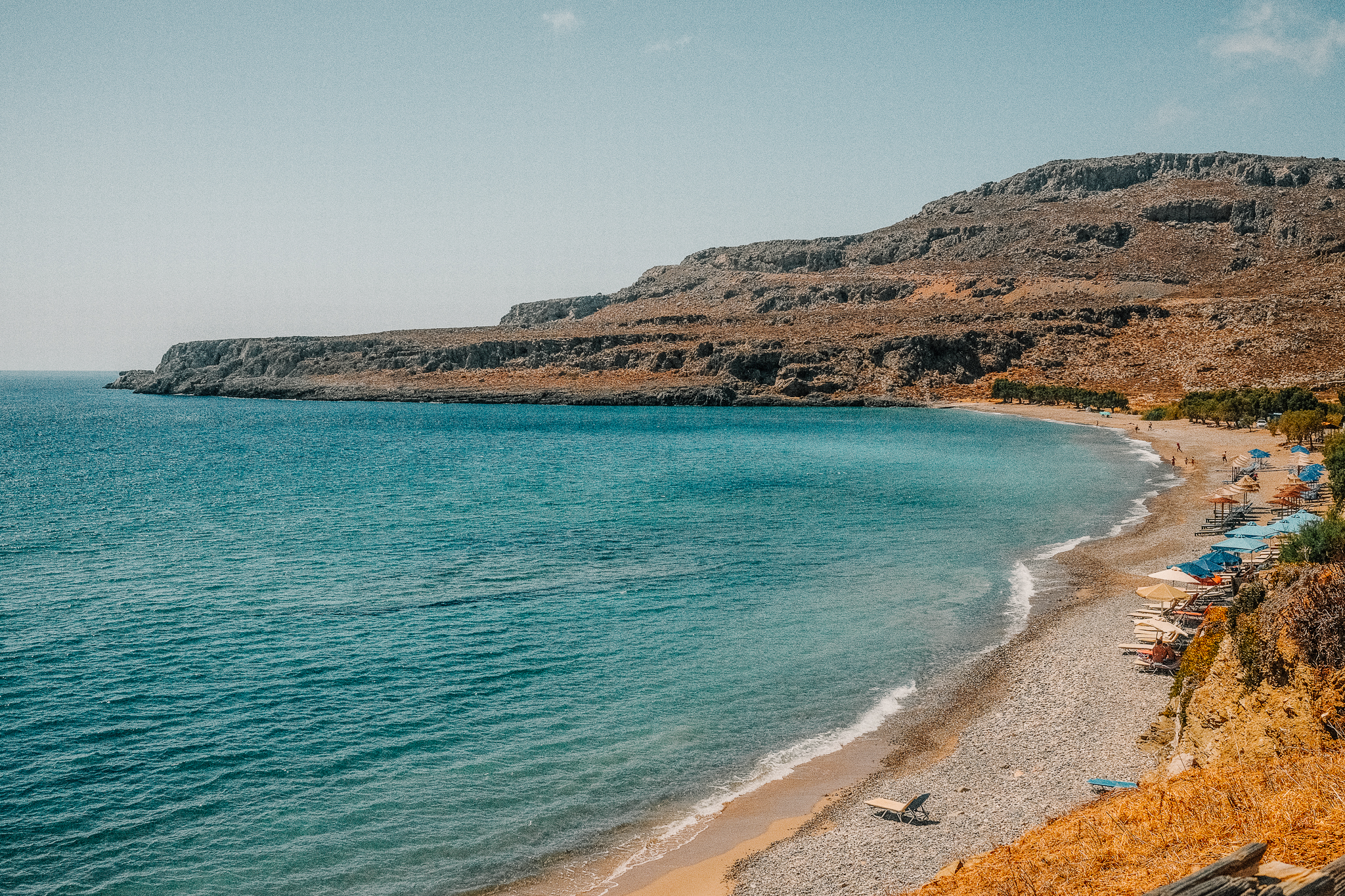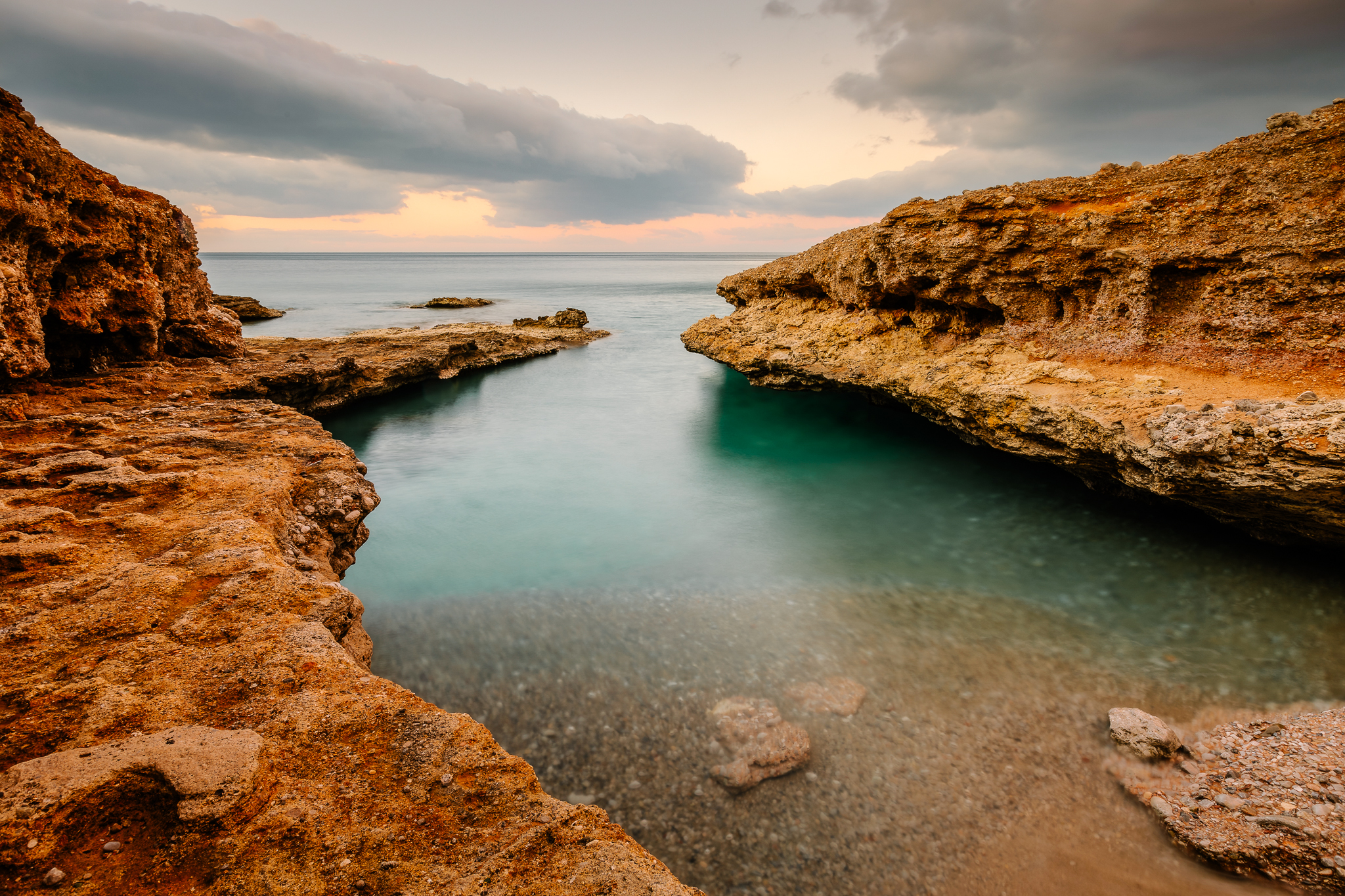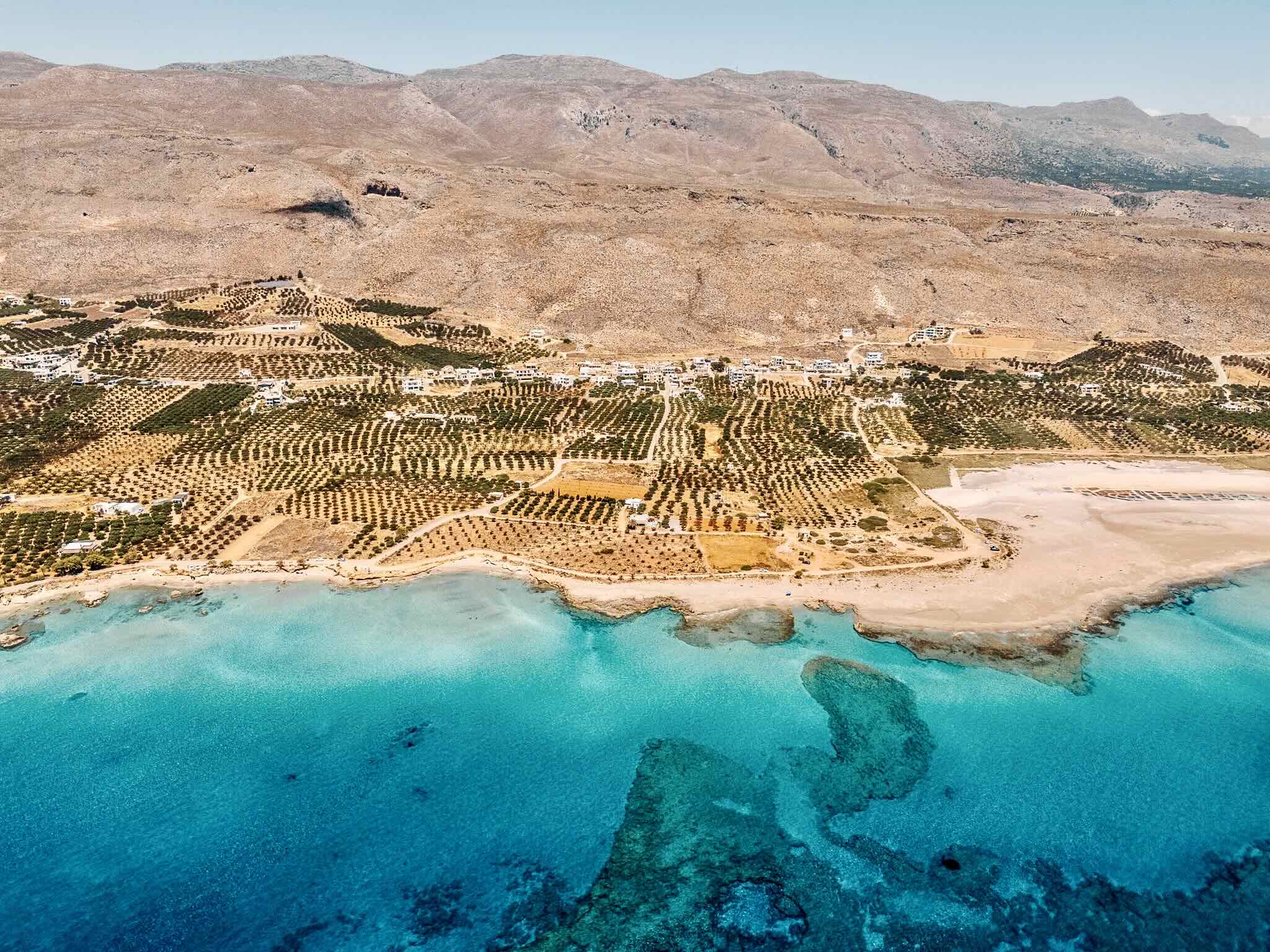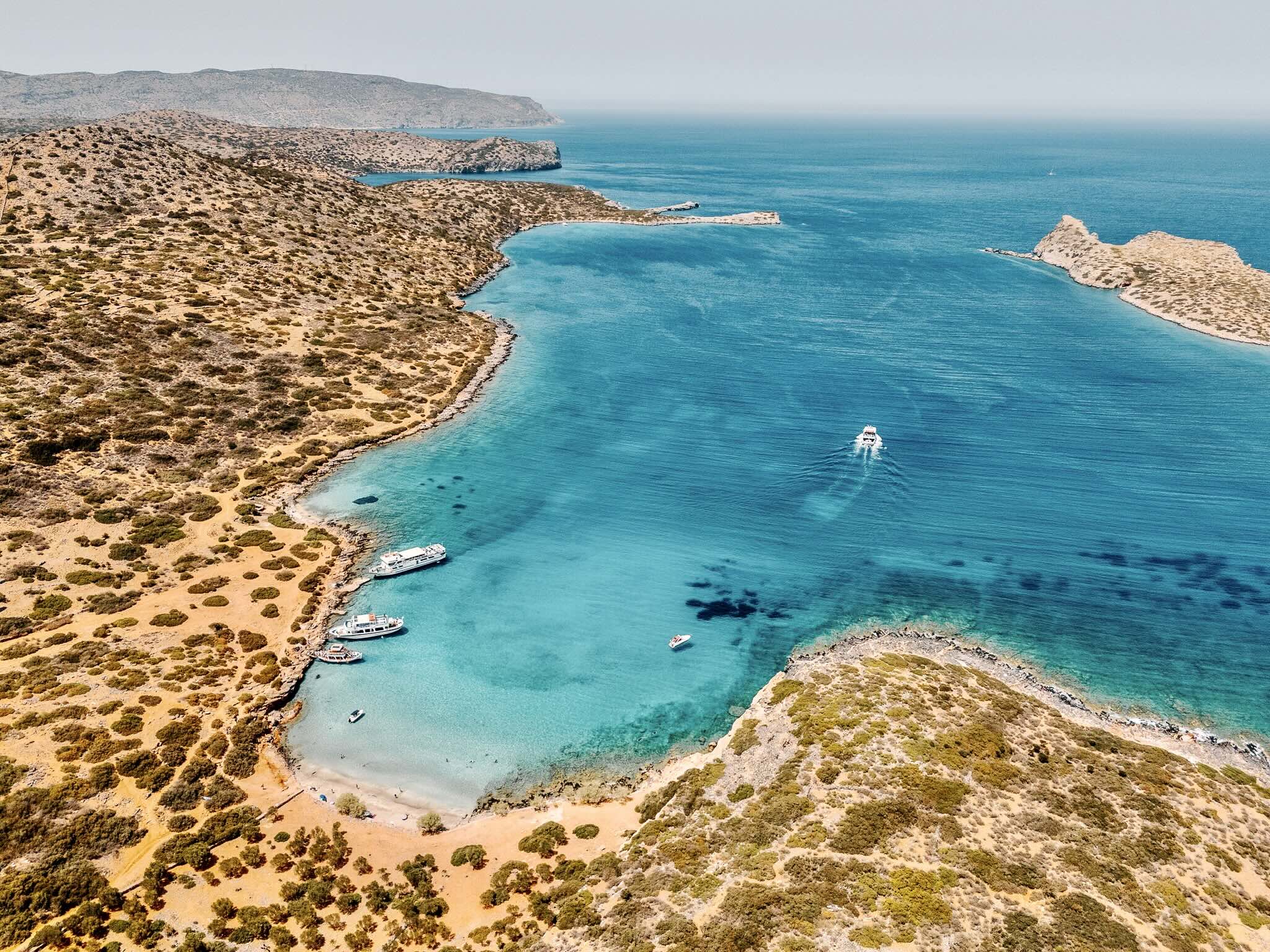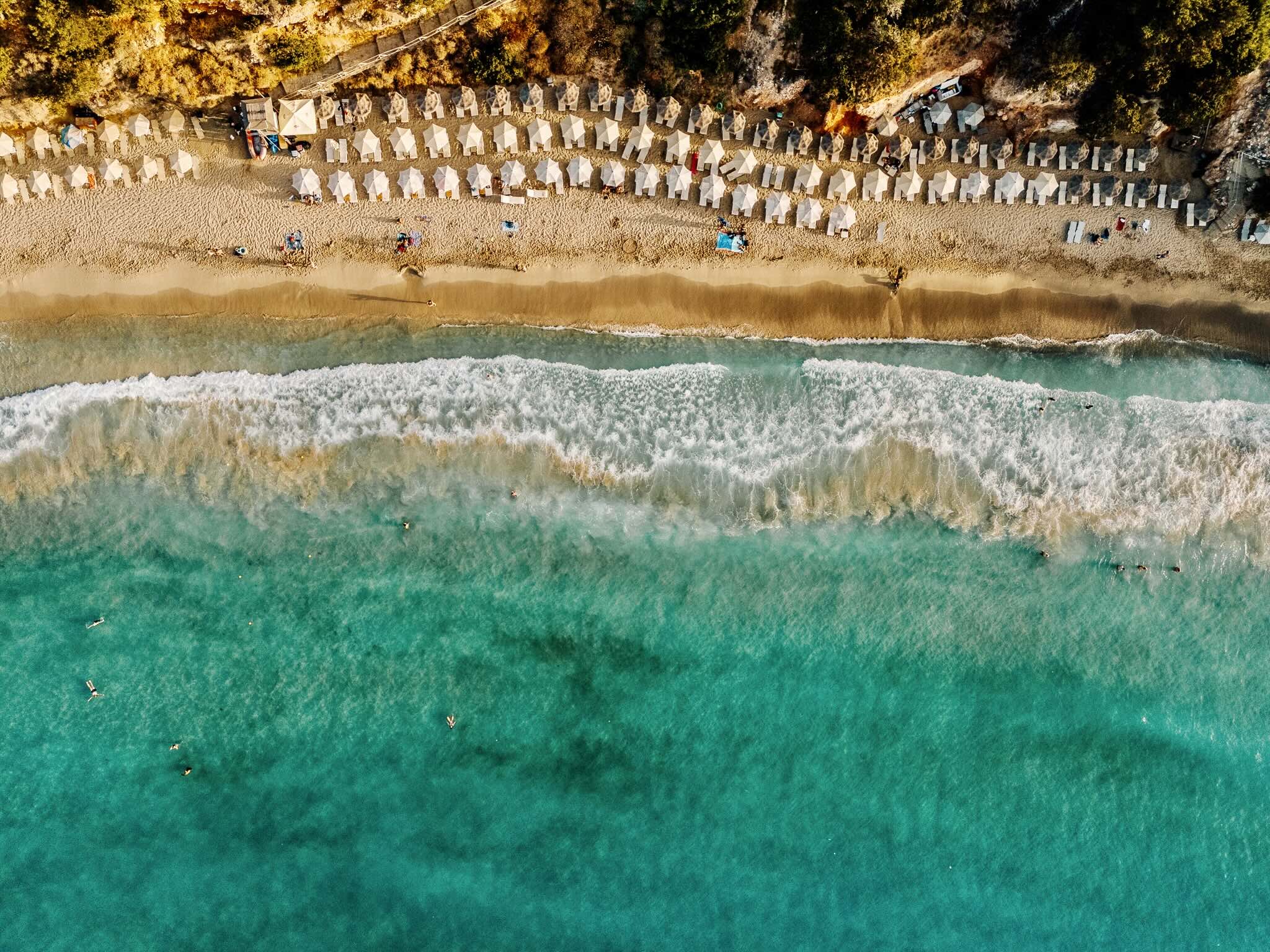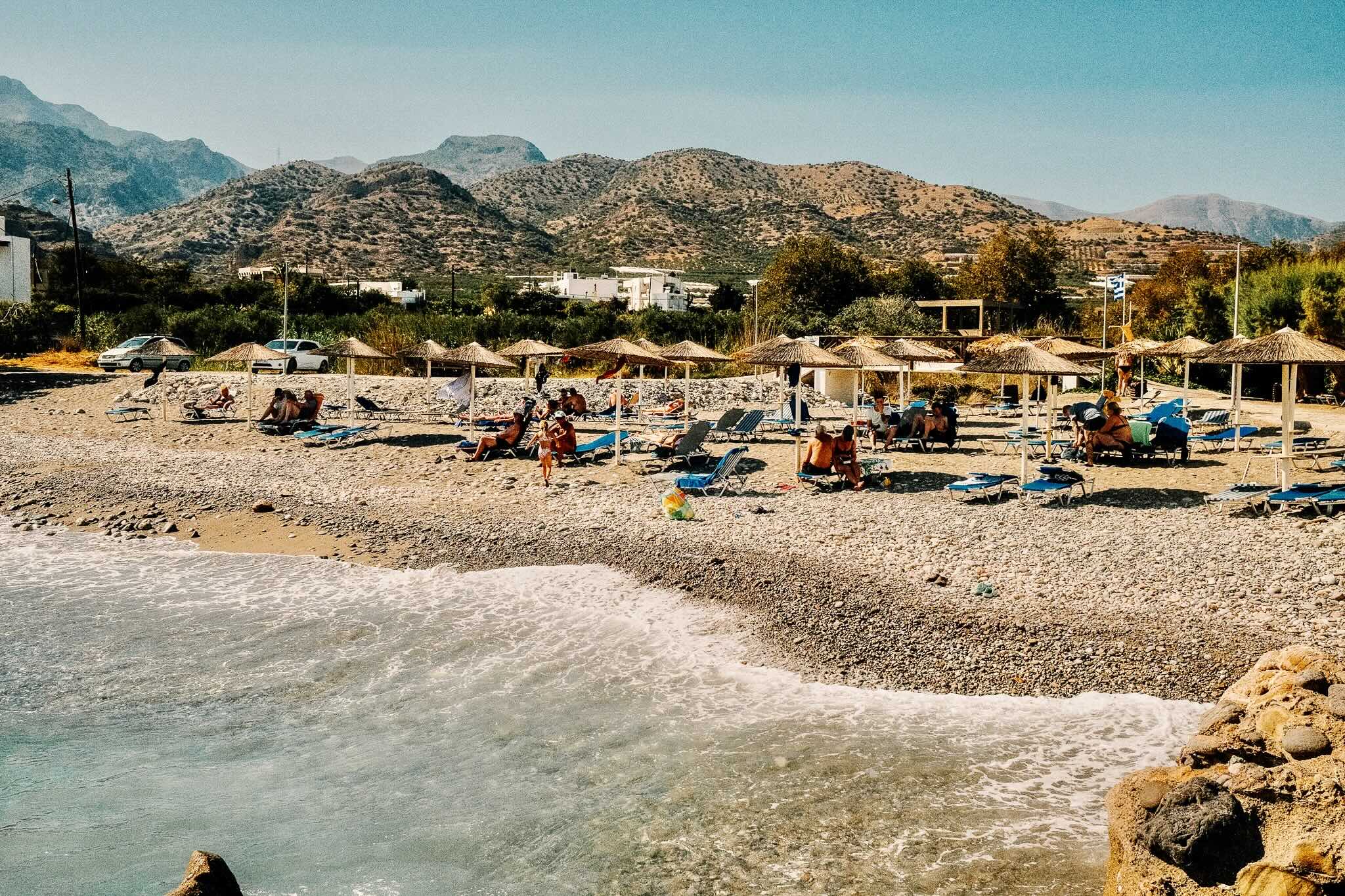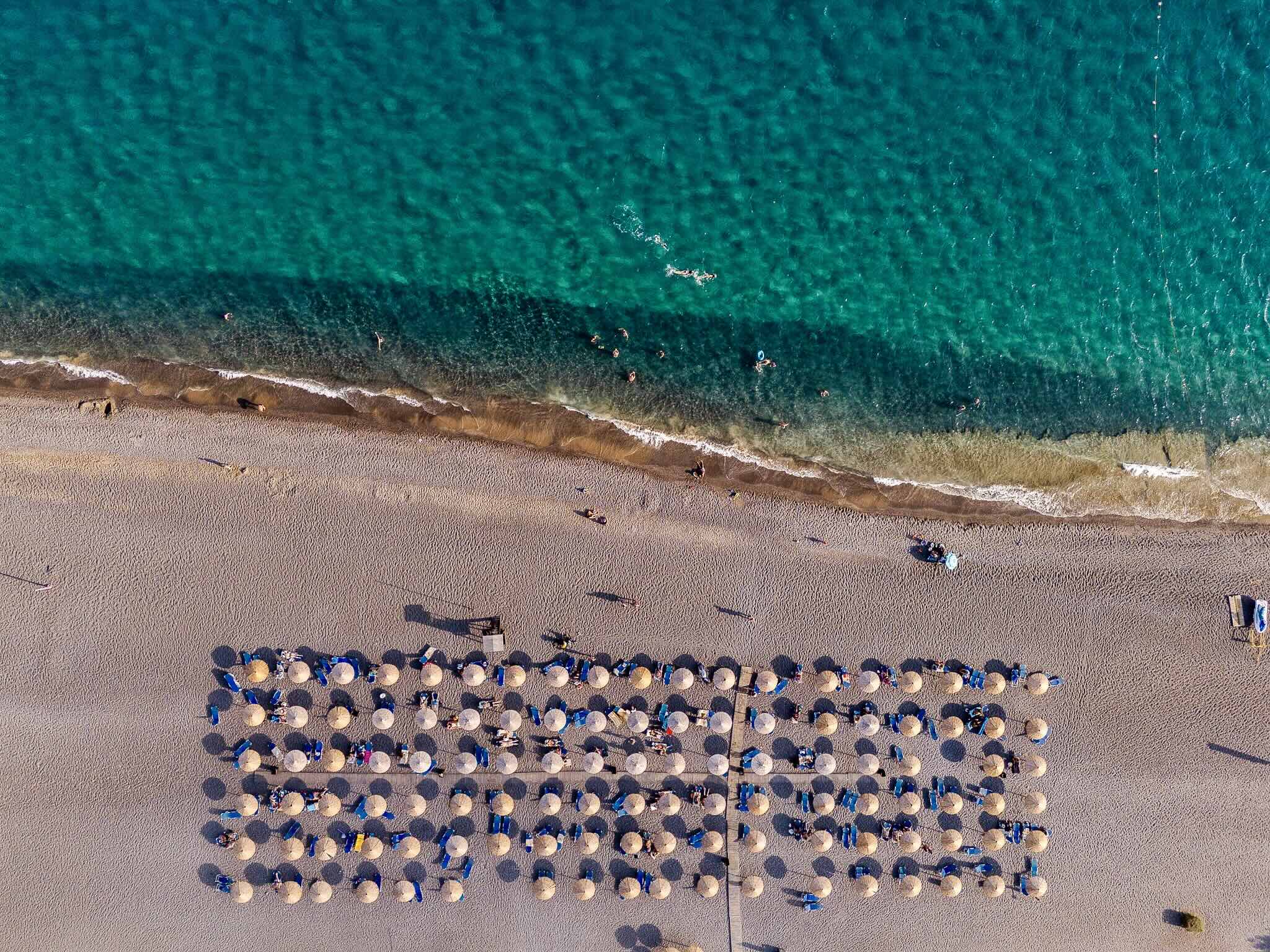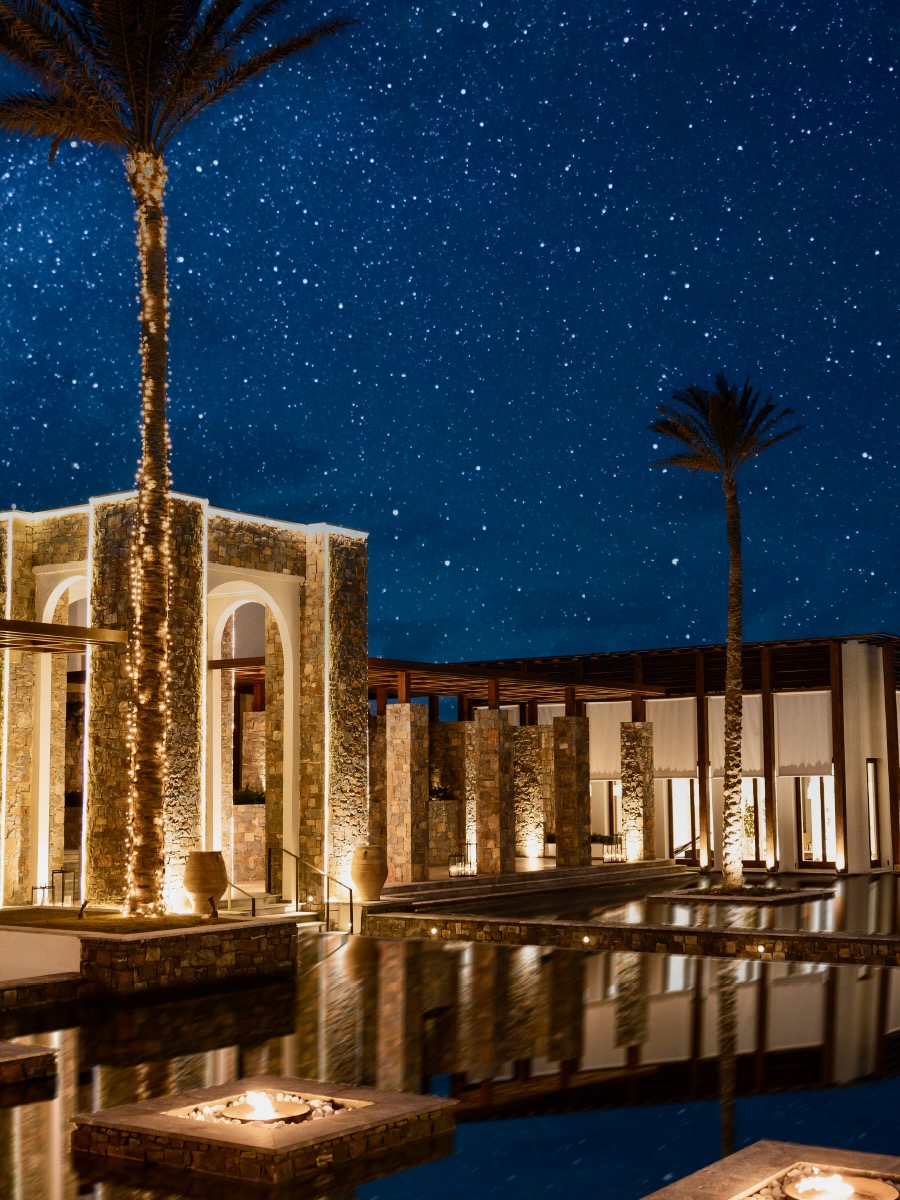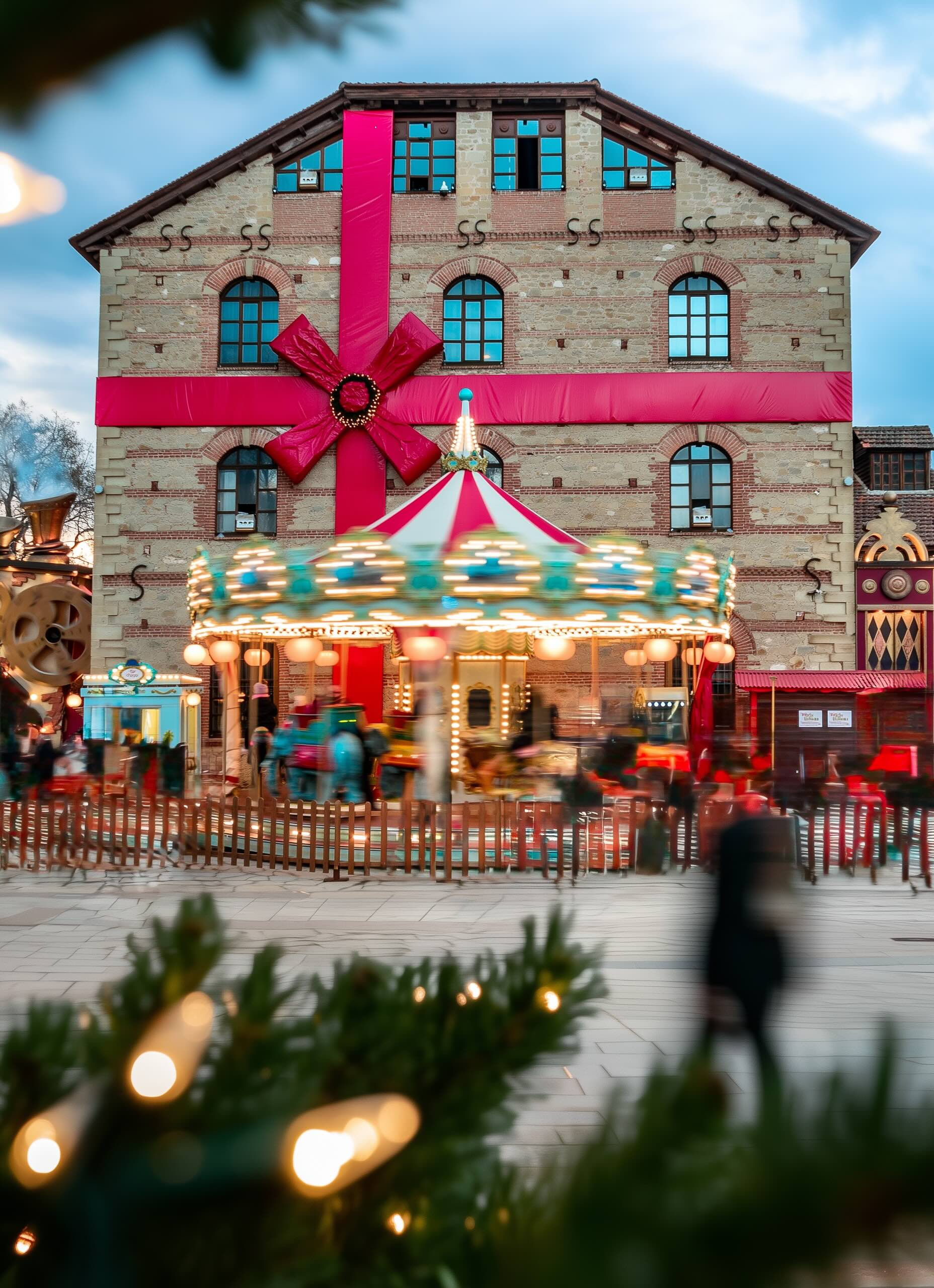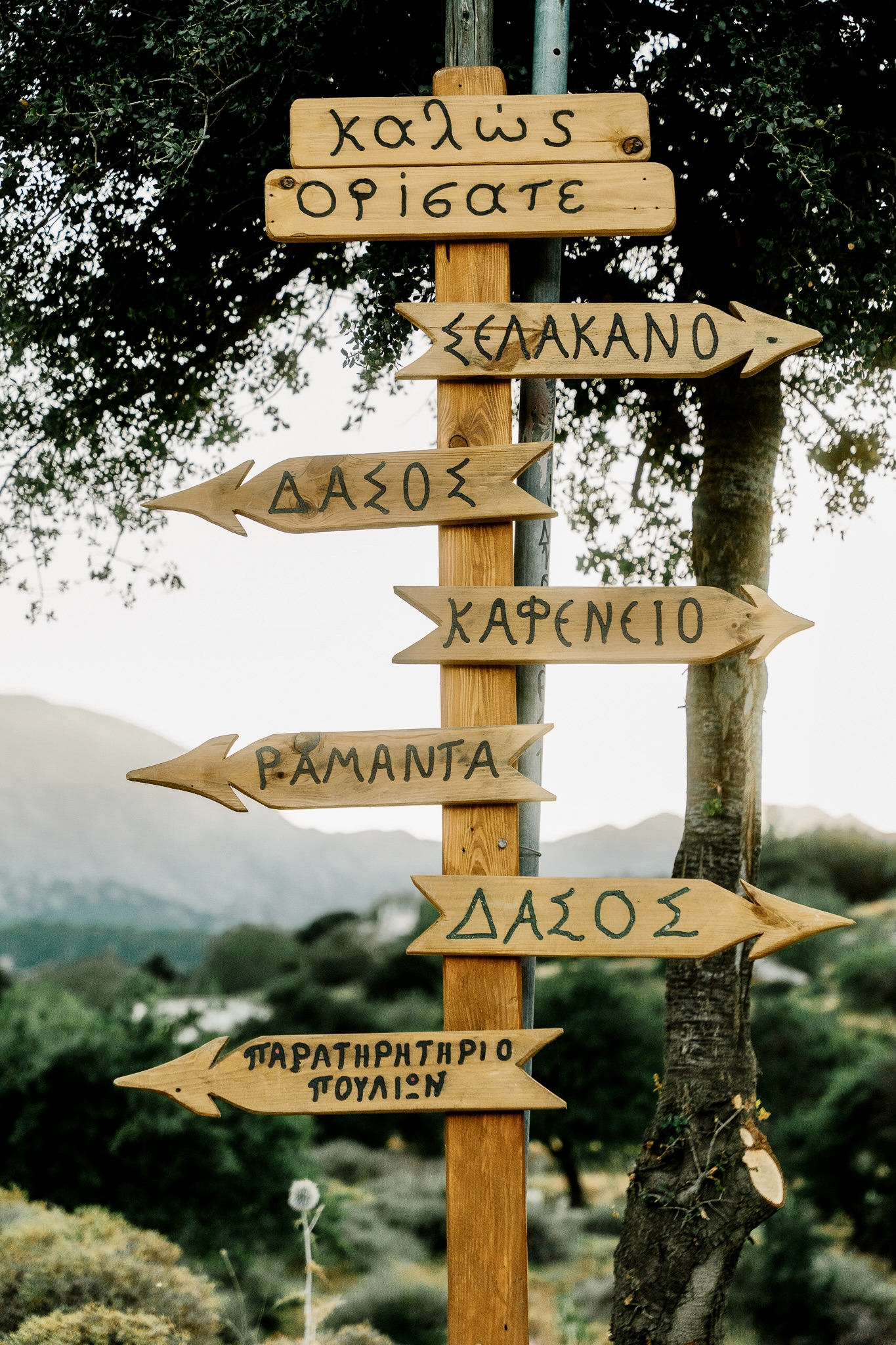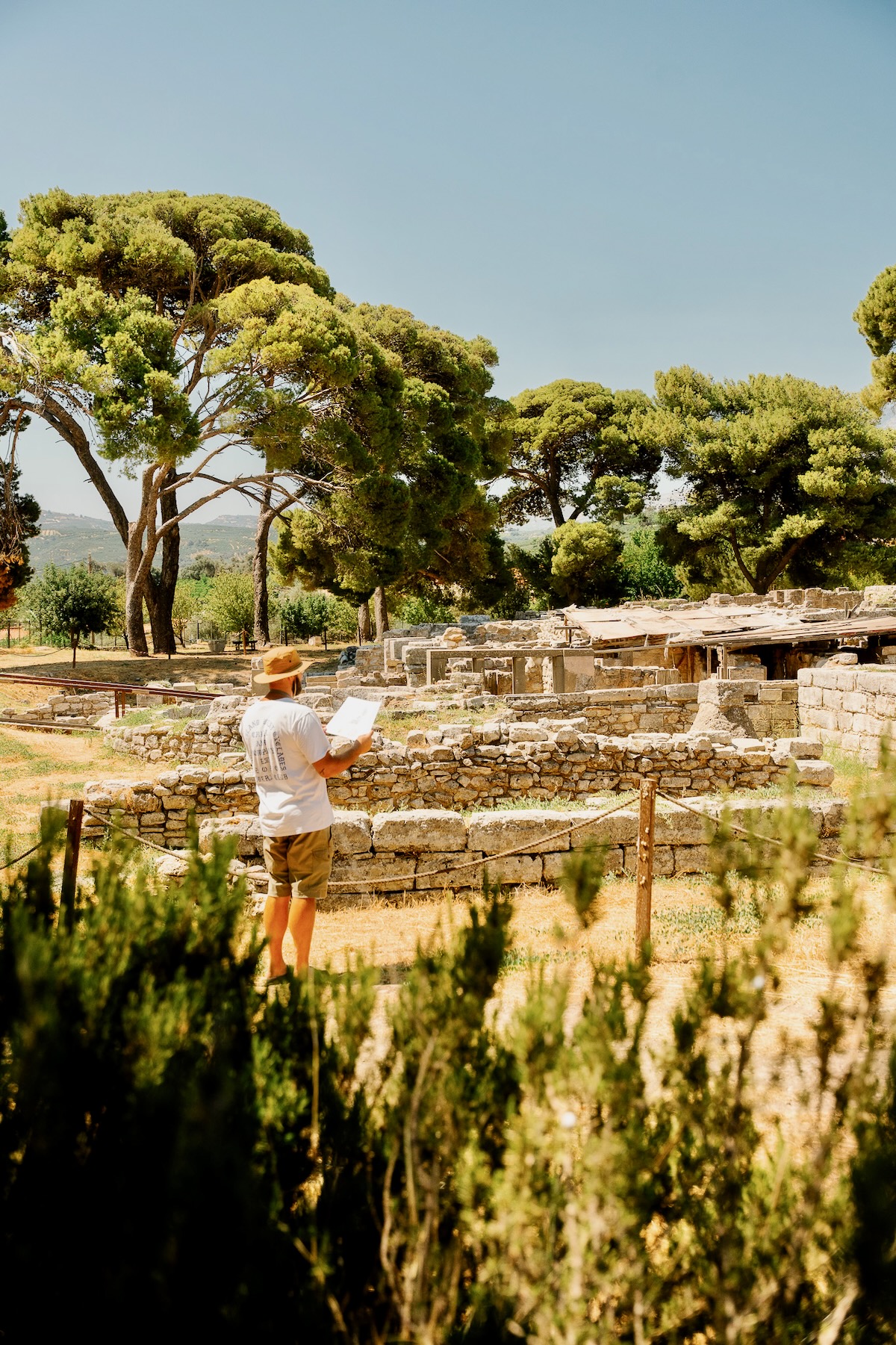Where the Mediterranean’s classic cerulean turns suddenly other-worldly, Lasithi’s shoreline looks less like a Greek cliché and more like a Kubrick set dusted with salt. Picture ash-blond sand sliding into pewter coves, date palms swaying like extras in a Seventies surf film, and rock formations so sculptural you half-expect a Calder mobile to pivot overhead. This is the remote eastern edge of Crete, and it is where the Travel.gr team has been roaming at dawn, catching the hush before beach cafés stir and the first caiques cut the mirror-flat sea.
Our new visual dossier pairs original stills with 15-second video shorts, sequenced like daydreams: a drone’s-eye glide over Vai’s palm forest tilts to reveal a shoreline dappled in apricot light; Chrissi Island’s sandbar dissolves into two seas at once, its tones sliding from aquamarine to lapis as shadows lengthen; the lunar flats of Xerokambos show wind-carved limestone meeting water so clear it seems back-lit. Each clip lingers just long enough to taste salt on your lips, then cuts to the next clandestine cove.
This is your passport to the untamed: a place where Bronze Age myths mingle with free-divers, where the soundtrack is cicadas in high fidelity, and where remote still means no cell signal between coves. Dip in at the moment the sun brews over the Libyan Sea horizon, and stay until your screen goes dark.
01
Vai Beach
Vai is the headliner, the beach the locals whisper about once the boats pull away. Picture a sweep of porcelain-gold sand fronting water the color of mouth-blown glass, then let your gaze drift inland: an undulating grove of Phoenix theophrastii palms, nearly 250 acres strong, the largest wild palm forest in Europe. The name is literal – vai is Cretan dialect for “palm” – yet the scene feels lifted from the Caribbean, a Mediterranean meets tropics mash-up found nowhere else. Thousands of slender trunks rise like natural colonnades, their fronds rattling in the sea breeze while cicadas supply the backbeat. Despite the Edenic set design, creature comforts await: sun-beds, a beach bar pouring freddo espressos, even discreet Wi-Fi for the incurably connected. Step a few meters away, though, and the modern world falls silent, leaving only salt, sun, and the rustle of prehistoric leaves.
02
Chrissi Island (Gaidouronisi)
Locals still call it Donkey Island, a nod to the era when worn-out pack animals were ferried across to live out their days in peace. On the charts it reads Chryssi, “Golden,” a slim, protected sandbar lounging just off Ierapetra. The moment you step ashore the color wheel spins: milk-pale beaches bleach into jade shallows, while wind-pruned juniper and the odd palm tree bend over coral rubble the texture of sea salt. The entire isle is a Natura 2000 reserve, so the soundtrack is limited to water fizzing over shells and the whirr of cicadas. Arrive on the first boat, skirt the main sun-bed cluster, and mainland Crete might as well be on another planet.
03
Koufonissi (Lefki)
Lefki, as the ancients called it, drifts in the Libyan Sea like a bleached shard of marble, empty of people yet thick with stories. Limestone cliffs rise in chalky folds, hemming in wind-etched cedar groves and salt flats that glitter like broken mirrors at noon. Archaeologists have teased out Minoan pottery shards and faint foundations, proof that this speck once hosted life long before the tourist era. Today the entire island sits inside a Natura 2000 envelope, its only guardians the gulls and the hiss of surf against stone. Step onto its shelving beach and you feel time contract, history and raw nature colliding in the same bright breath.
04
Itanos (Erimoupolis)
Itanos (Erimoupolis)
A few coves north of Vai, the coastline splinters into three flawless crescents locals lump together as Itanos, or Erimoupolis if you trace the older maps. Sand the texture of pastry flour meets water painted in layers of teal, yet underfoot the past keeps surfacing: toppled columns, mosaic shards, the faint grid of streets from the city of Itanos that thrived here before Rome had an emperor. Stand ankle-deep and you can scan two timelines at once. In one, the beaches read as untouched paradise; in the other, they are an open-air dig, every tide teasing out another artifact. Pack a snorkel along with your towel; marble fragments hide just beyond the break. History lessons seldom come wrapped in scenery this pristine.
05
Agia Fotia
Midway between Agios Nikolaos and Ierapetra, a pocket-size cove trades sand for smooth, gunmetal pebbles that clink like glass in the wash. The water is surgeon-clear, pinched on both sides by sculptural cliffs that turn rose at sunset. You get the hush of a hideaway but without the survivalist logistics; a short stroll up the lane delivers a taverna for octopus on the grill and rooms to rent should you decide the day deserves an encore. Call it seclusion with room service, a sweet spot where off-grid ambiance meets on-grid ease.
06
Almiros
At Almiros the river slips into the sea as if testing the temperature, cooling the shallows to a soft mineral chill that feels almost alpine. Along the banks a mixed chorus of reeds, date palms, and sky-high eucalyptus leans in to form a braided canopy, their scents—green sap, resin, salt—braiding too. The sand is pale, the water a blue so lucid you can count each ripple. Despite the Edenic staging the setup is turnkey: sun loungers in neat rows, lifeguard tower, a kiosk for iced café frappé. Families claim the gentle shallows, snorkelers drift toward the rivermouth, and everyone paddles in water clear enough to double as a mirror. Nature shows off, organization keeps the peace, and Almiros earns its spot as the area’s perennial crowd-pleaser.
07
Kato Zakros
Kato Zakros feels like a secret slipped between two epochs. Hike out of the so-called Gorge of the Dead, a silent corridor of honeycomb caves once used as Minoan tombs, and you spill onto a cove so calm the water barely whispers. Behind it a quilt of silver-leafed olive trees rolls toward the village taverna grills. Ruins of a Minoan palace lie a few footsteps inland, their stone thresholds still cool at dawn. Way-marked trails spider off along the cliffs, rewarding walkers with balcony views of the Libyan Sea and the occasional pottery shard underfoot. For beachgoers who measure paradise in both sea vistas and archaeological breadcrumbs, Zakros checks every box without raising its voice.
08
Goudouras
Where the Sitia Mountains taper into farmland and the farmland sighs into sea, a sleepy beach curls beside its namesake village like a comma at the end of a long sentence. The sand is silk-fine, the water glassy, and the plain behind it glows green with citrus and garden plots fed by hidden springs. Look east and the cliffs of Agios Antonios Gorge rise sheer and untouchable; look west and Goudouras Gorge cleaves the rock in pleats of ocher and gray. The pair frames the cove in a kind of natural proscenium, making every swim feel cinematic. Village life hums softly in the background – goats bell, a taverna grill smokes, someone strings octopus to dry – while the landscape trades in grandeur on a scale that feels almost private.
09
Xerokampos
Xerokampos is a place where the island’s skeleton shows through: raw limestone ridges bleached almost white, dotted only by squat thyme bushes that release their perfume each time the wind changes its mind. The hamlet itself is little more than a scatter of rooms-to-let and a single mini-market, enough creature comfort to keep the edge off the remoteness without dulling it. Fan out along the coast and you’ll meet a trio of beaches, each with its own mood. Alona unrolls a ribbon of powder-soft sand; Alatsolimni hides pockets of healing clay you can smear on like a seaside spa; Amatou is the silent one, a crescent where even August feels like a private booking. Everywhere the water is so clear it turns boat shadows into floating ink. Stark mountains behind, liquid sapphire in front, and thyme-scented air all around – Xerokampos is contrast distilled into pure, quiet pleasure.
10
Kolokitha
Kolokitha lies across from Elounda on the calm side of the Spinalonga Peninsula. Drive over the Poros causeway beside the salt flats, park at Agios Loukas chapel, then walk the short trail to the sand. The cove’s fine gold beach meets luminous turquoise water, and the view of Spinalonga’s ruined walls completes the quiet, facility-free setting.
11
Voulisma
Voulisma sweeps along Istros Bay beneath the sheer face of Vrocastro hill. Its golden sand and glass-clear water are backed by sunbeds, a snack kiosk, and a lifeguard, yet the cove still feels airy and natural. A recently uncovered Minoan settlement just inland adds a layer of history to an already standout swim spot.
12
Koutsouras
Koutsouras is a discreet arc of slate-gray pebbles just before the village that shares its name, its water clear enough to mirror the pines. Behind the shore, the Thripti and Orno slopes wear a dense green coat; trails thread upward to the Red Butterfly Gorge where rust-colored moths pulse against limestone walls. The scene is part swim, part forest ramble, all quiet luxury.
13
Makrigialos
Makrigialos earns its name, a broad ribbon of pale sand laid along a glass-calm bay on the Libyan Sea. Sunbeds line up in measured rows, with beach bars and cafés delivering iced espresso to the water’s edge, yet conversation rarely rises above the tide’s hush. The bay’s curve keeps the swell muted, inviting unhurried laps and all-day lounging that feels more retreat than resort.
14
Agios Ioannis Beach (Koutsounari)
Koutsounari, known locally as the Great Beach, stretches for kilometers along Lasithi’s south coast in a smooth sweep of graphite-gray sand. Clusters of loungers and cafés anchor the center, yet a short stroll in either direction trades music for cicadas and room enough to walk without another footprint in sight. The bay stays calm, the water glassy, and the beach so vast that a single afternoon can feel like three distinct escapes layered side by side.
15
Achlia
Achlia, nicknamed Galini, folds into a petite bay of dark, grainy sand and see-through turquoise. Pine-blanketed hills rise close enough to study while you float. A lone taverna serves grilled sardines and cold beer; its row of sunbeds keeps parents pleased, yet the mood stays hushed and slow.



